Solar Eclipse Expedition: An Eclipse-Chaser's Photo Guide (Gallery)
Total Solar Eclipse: July 2010
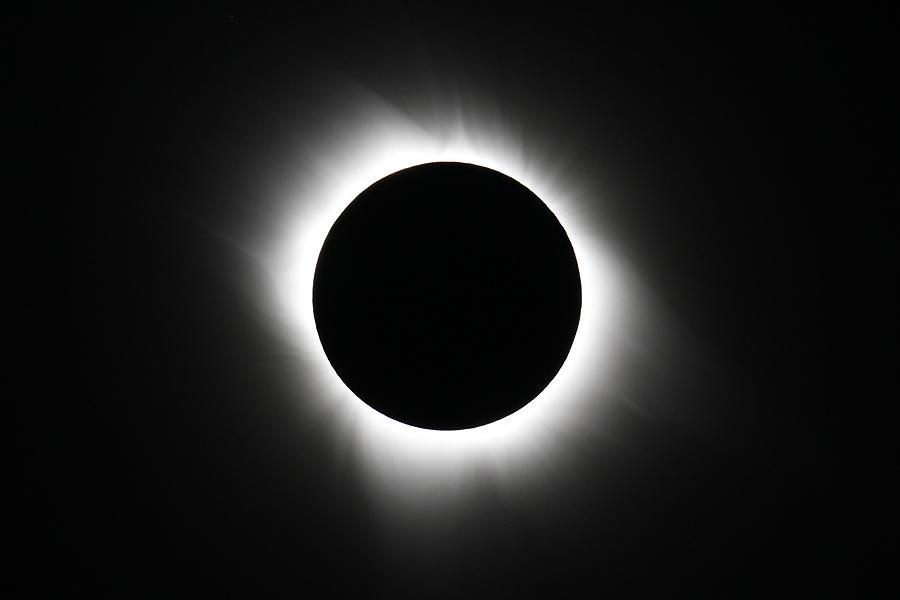
Solar eclipses are amazing celestial sights, but they must be observed safely (with safety glasses) and can only be seen from specific parts of Earth. For die-hard eclipse fans planning trips to see a solar eclipse, SPACE.com asked veteran eclipse chasers for tips on how to make the most of an expedition to see the moon block the sun. See their advice in the following images.
This view of the sun’s extremely hot outer atmosphere, called the corona, was captured by Edwin Aguirre and Imelda Joson from the South Pacific during the total solar eclipse on July 11, 2010. Note the moon's pitch-black silhouette and the corona's fine structural details.
Total Solar Eclipse: 1st Diamond Ring
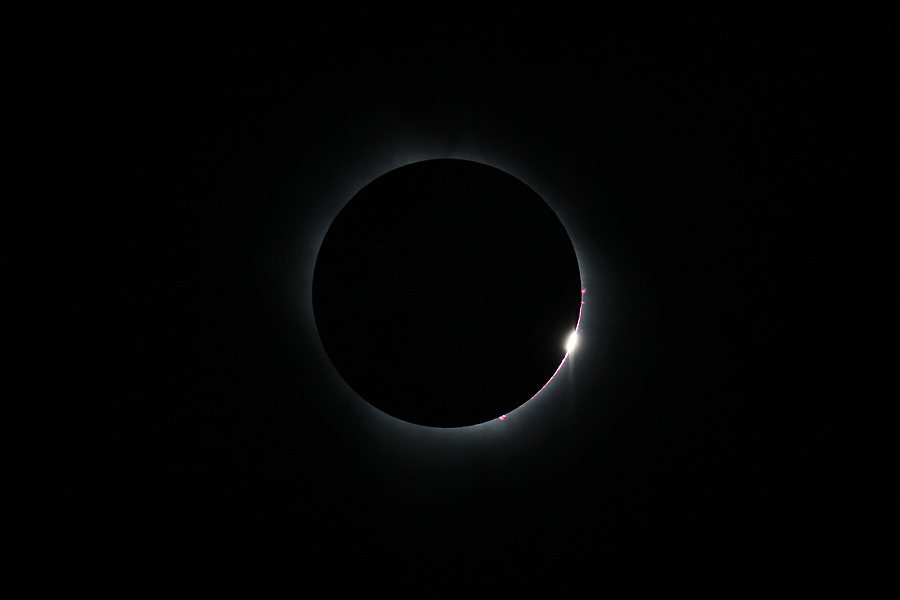
As the last vestiges of the sun’s disk was covered by the moon, a solitary bead of sunlight remained shining briefly through a deep valley along the moon’s rugged edge, creating this spectacular “diamond ring” effect during the total solar eclipse of July 11, 2010. Soon the bead was extinguished, marking the beginning of totality.
Total Solar Eclipse: Diamond Ring Close-Up
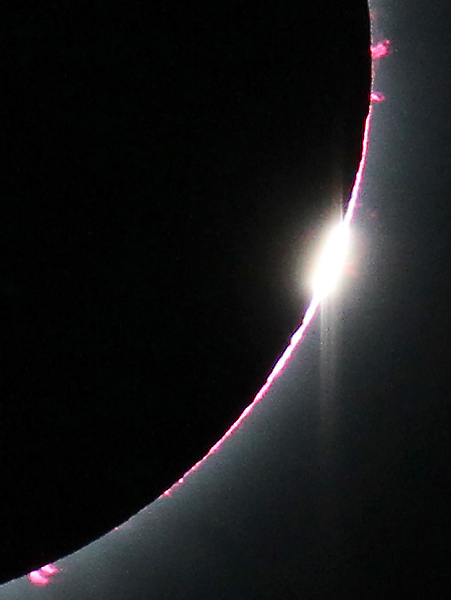
A close-up view of the diamond ring and pink solar prominences protruding from behind the moon’s disk during the July 11, 2010, total solar eclipse. Prominences are immense glowing features that extend many thousands of miles from the sun.
Total Solar Eclipse: 2nd Diamond Ring
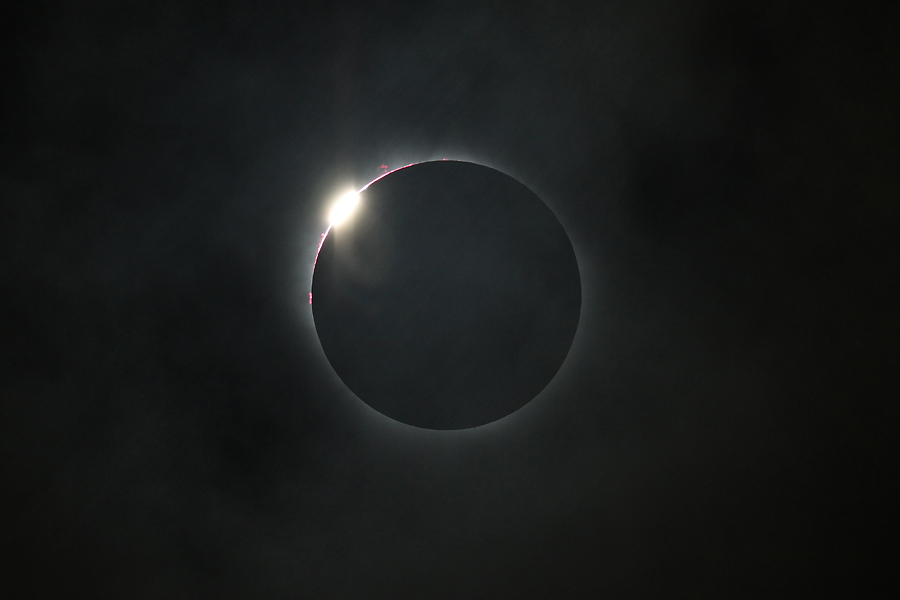
Total solar eclipse expedition (July 11, 2010): After 4 1/2 minutes of darkness, the moon uncovered the sun’s disk and a second, long-lasting diamond ring burst forth on the opposite side of the sun, signaling the end of totality. By this time clouds began to roll in, and the sky quickly became overcast.
Total Solar Eclipse: 2nd Diamond Ring Close-Up
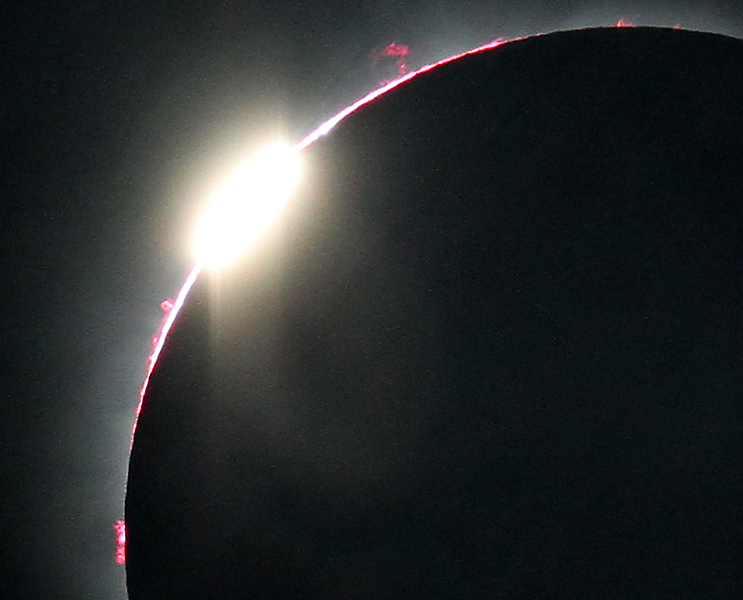
This close-up view of the July 11, 2010, total solar eclipse's second diamond ring reveals a number of prominences as well as the pinkish layer of the sun’s atmosphere called the chromosphere.
Eclipse Chasers: Imelda Joson and Edwin Aguirre
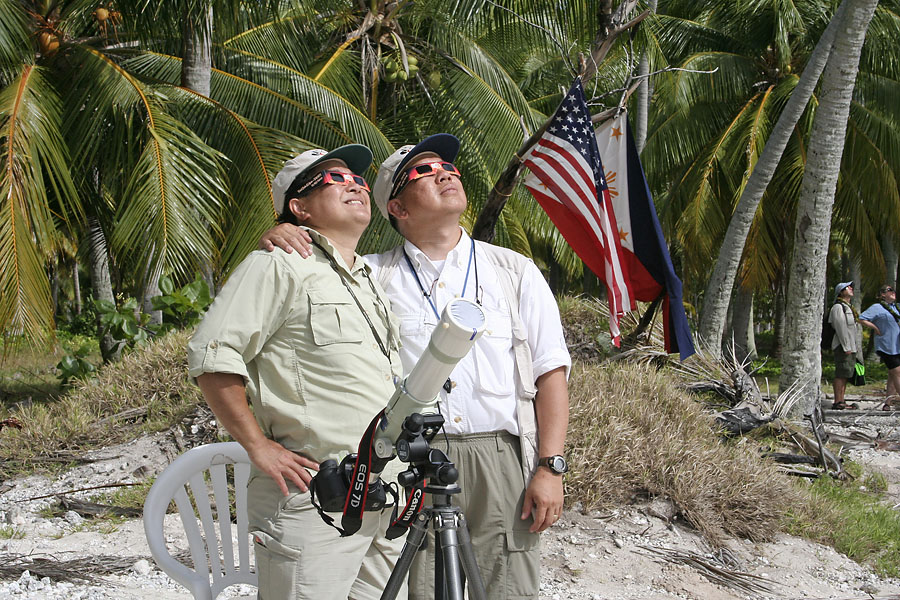
Veteran eclipse chasers Imelda Joson and Edwin Aguirre observed the July 11, 2010, total solar eclipse from Tatakoto, a tiny isolated atoll in French Polynesia’s eastern Tuamotu Archipelago about 800 miles (1,200 km) east of Tahiti. Due to strict size and weight limits on luggage for the chartered flight from Tahiti, their photographic gear had to be light, compact and portable.
Total Solar Eclipse 2010: Joson Images Photo Rig
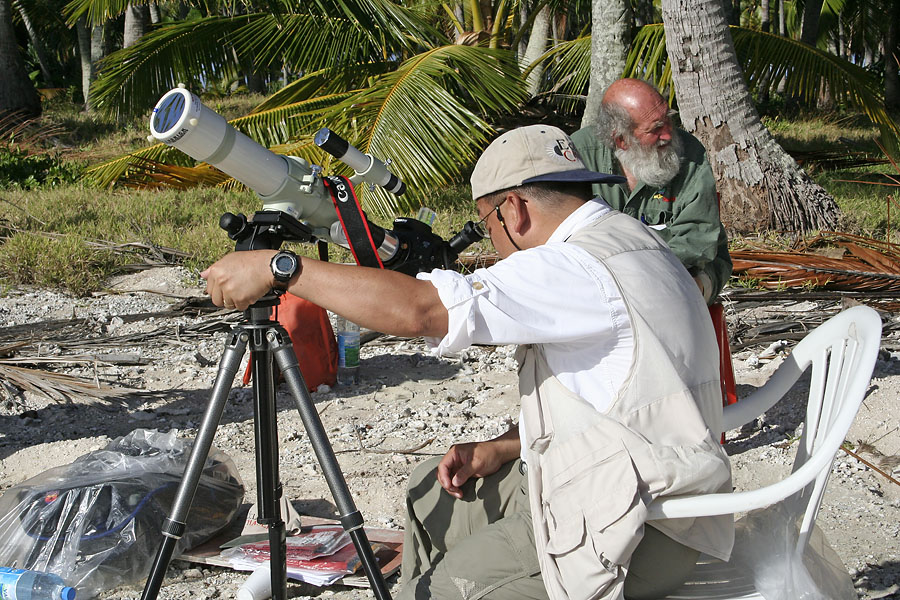
Veteran eclipse chaser Edwin Aguirre’s imaging setup for the July 2010 total solar eclipse consisted of a Canon EOS 7D digital SLR camera attached to a Takahashi FC-60 f/8.3 apochromatic refractor, which was fitted with a Baader solar filter and mounted on a Bogen geared-head tripod. The telescope’s optical tube assembly measures only 17.5 inches long and weighs 2 pounds 13 ounces.
Get the Space.com Newsletter
Breaking space news, the latest updates on rocket launches, skywatching events and more!
Solar Eclipse Packing: Gearing Up
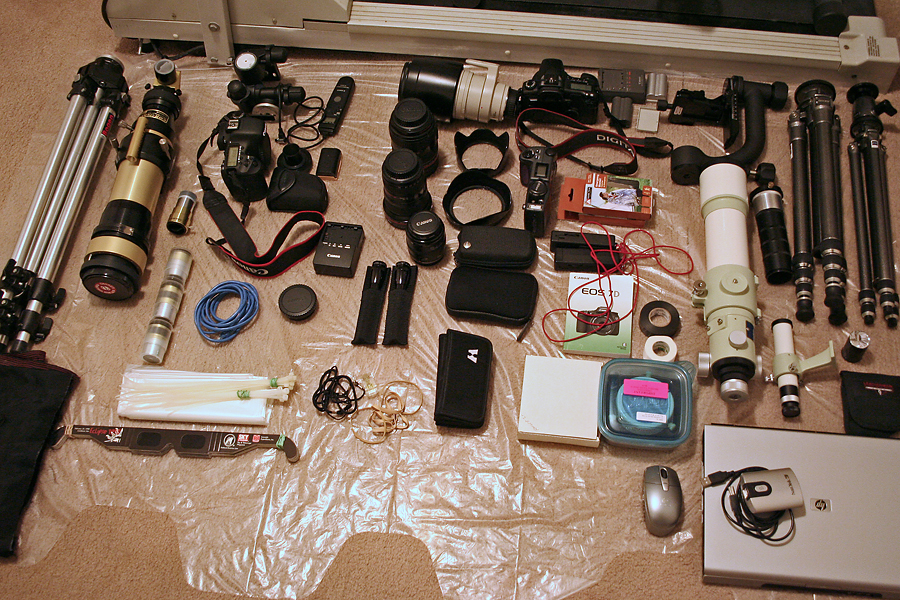
Before packing their gear for the July 11, 2010 solar eclipse, Imelda Joson and Edwin Aguirre like to lay out all their telescopes, lenses, cameras, tripods, laptop computer, and accessories on the floor. This makes it easier for them to see if there are any pieces of equipment missing. This photo was taken the day before their departure for Page, Arizona, to observe the annular solar eclipse on May 20, 2012.
Solar Eclipse Photography: Hydrogen-Alpha View
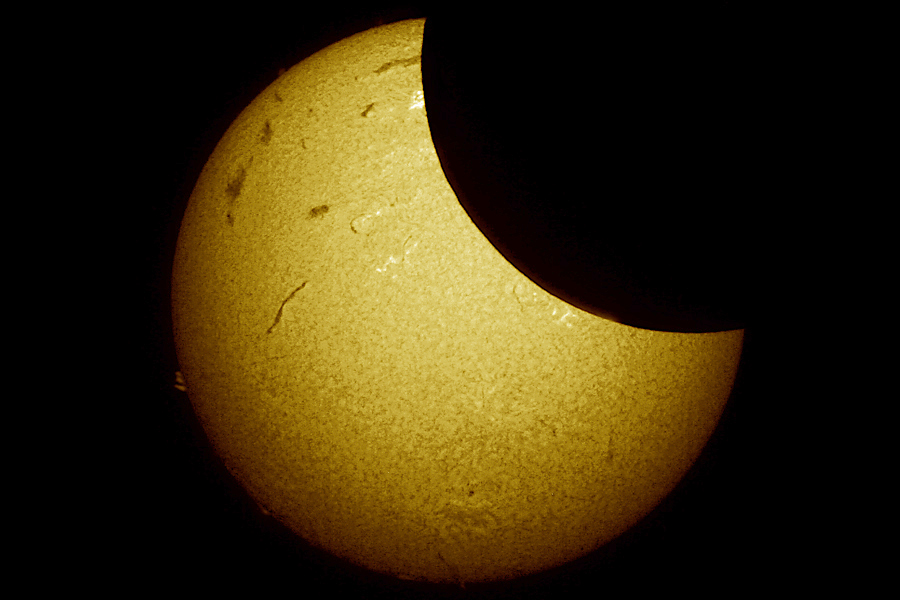
For a total solar eclipse, eclipse chasers can bring along a portable hydrogen-alpha telescope to get unique views of the partial phases as well as see and record prominences along the sun’s edge before totality. This H-alpha image of the partially covered sun was obtained by Edwin and Imelda during the May 20, 2012 annular eclipse.
Solar Eclipse Hydrogen-Alpha Filter Gear
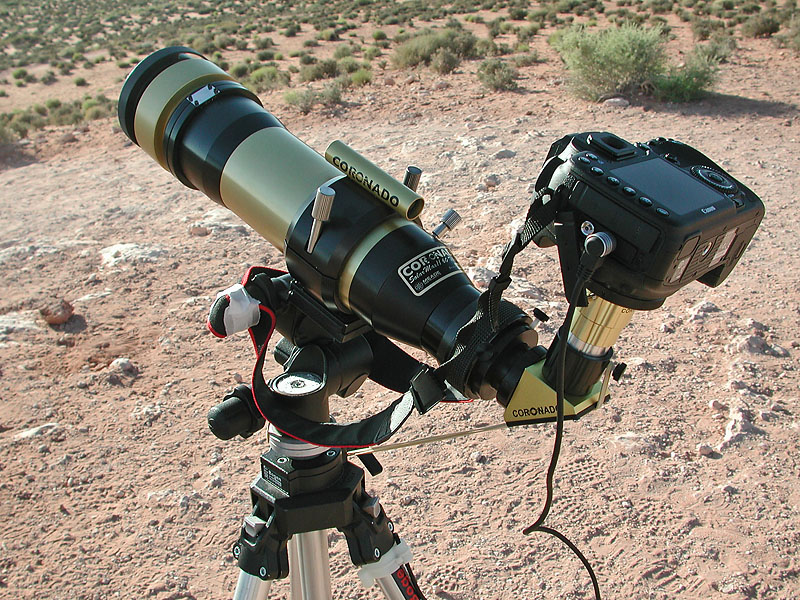
Veteran eclipse chasers Edwin Aguirre and Imelda Joson used this Coronado SolarMax II 60 Double Stack telescope from Meade Instruments to capture the H-alpha sun in May 2012 annular solar eclipse. Unlike ordinary, unfiltered light from the sun, also known as “white light,” H-alpha is the red light emitted by hydrogen atoms in the sun’s chromosphere at a wavelength of 656.3 nanometers.
Total Solar Eclipse Experience Sharing
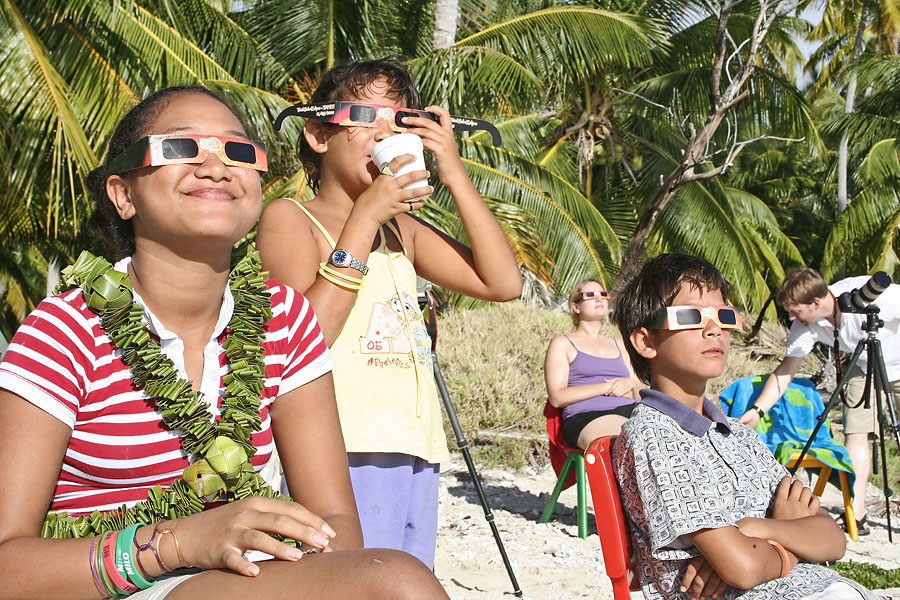
Eclipses are a great way of introducing astronomy to people. During the July 11, 2010, total solar eclipse, veteran eclipse chasers Imelda Joson and Edwin Aguirre distributed eclipse glasses to residents of Tatakoto Atoll in French Polynesia so they could safely enjoy the celestial show.
Join our Space Forums to keep talking space on the latest missions, night sky and more! And if you have a news tip, correction or comment, let us know at: community@space.com.
Imelda B. Joson is a veteran astrophotographer, as well as an eclipse chaser and world traveler. With her husband, Edwin Aguirre, she has organized, led and/or participated in 11 solar eclipse expeditions in North America, Asia and Africa. The pair also conceptualized and created National Astronomy Week, an event that celebrates and publicizes astronomy in the Philippines.









